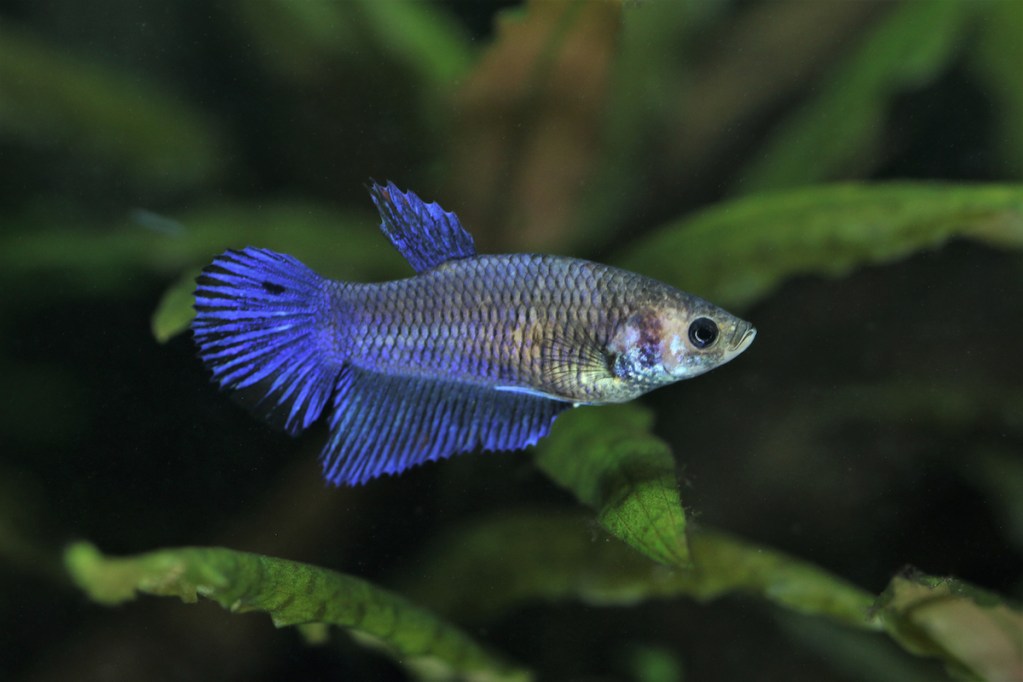Betta fish (also known as Siamese fighting fish) rocketed to fame and took a spot as one of our favorite swimming pets for their beautiful color and elegant fins. They, too, are recognized for being aggressive toward each other and will even flare (a display) to you, their owner. However, many of those characteristics only apply to the males of the species, whereas the female versions look and act a little differently. Here’s why you should consider bringing one of these lady bettas home.

What are betta fish?
These underwater beauties come from Thailand and live in rice paddies in the wild. It’s a myth that they only need a small tank, but bettas often do make great solitary pets that can thrive in an aquarium by themselves. They can also live with many other fish, just not other bettas. One fun thing about these swimmers is that they learn to recognize their owners and will get excited when you come to feed them every night.
How do female bettas differ from males?
You probably know that you can’t keep male bettas with others of their kind, as they will fight males and sometimes aggressively mate with females (we recommend only experts breed them). Female bettas won’t likely be building any bubble nests though, as that’s a job for the males.
On the looks front, you might think that the girls are drab, but it’s not the case. They, too, showcase beautiful red, blue, and white. It might not be quite as striking, but still lovely, and they have a lot of the same spunk with less hostility.
Why should you get a girl betta?
The great news is that means these female fish can live together in a tank (their squad is called a sorority). They also won’t be as aggressive to others in there with them, regardless of species. So while you should only place fish in an environment where you know they will thrive, female bettas can swim with just about anyone that suits their accommodations. Lastly, females can live a bit longer than males, up to five years, so you’ll have your sweet fish for a long time.
With any betta fish, you have to be very careful when you get them from a pet store. Research thoroughly to confirm your new pets came from a reputable breeder. You should also inspect any aquatic creature before bringing them home. Look at the eyes and scales in particular since those can give you some idea of overall health.
Once you have them established, they might establish a hierarchy, which will include a leader. Hopefully, all of your group will get along, but occasionally you’ll need to separate two who just can’t play nice. That’s a great excuse to set up a new aquarium and bring the troublemaker to the new tank while keeping the fish in the first tank willing to submit to the queen bee.



